Art Guides
Here Are the 10 Best Places in the World to See Street Art, From George Town in Malaysia to Bushwick in Brooklyn
Explore street art capitals from Cape Town to São Paulo.
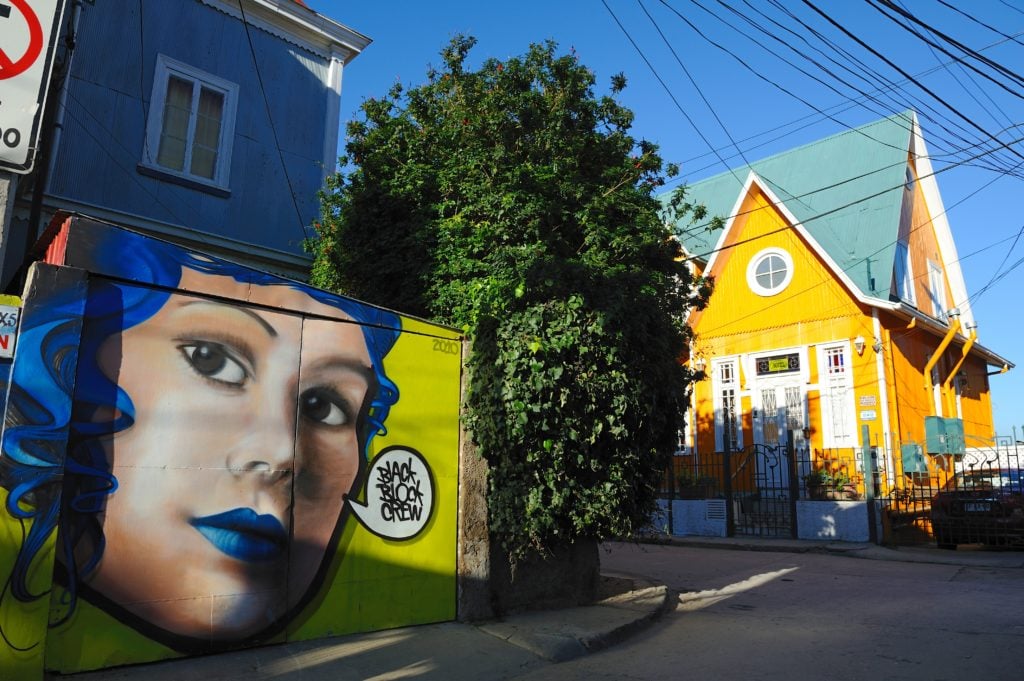
Explore street art capitals from Cape Town to São Paulo.

Katie White

Desperate to see some art, but eager to maintain your social distance? A street art walking tour might be just the fix.
Street art, of course, has had a controversial and rapidly evolving history. Once considered mere criminal vandalism, street art later found an eager audience in the downtown New York art scene of the 1980s. More recently, street artists have been coveted by auction houses for creating high-price auction lots. Now it may be poised for another transformation: into the safest and most socially responsible art form around.
And luckily, it can be found in cities in every corner of the world. So if you’re keen to go exploring art-covered warehouses and painted facades, here are 10 neighborhoods and cities where locals can be sure to safely enjoy art in the open air.

Stik’s “Couple Holding Hands” is one of the few street art murals that is continually maintained in the ever-changing Shoreditch street art scene.
A historically gritty district in the East End, Shoreditch’s lanes and alleyways are famously covered in world-class and ever-changing murals. Unlike some street art destinations, Shoreditch is all about what’s new and exciting, with much less emphasis being put on preservation, so visitors can never be quite sure what they will find.
A few exceptions to the out-with-the-old ethos do exist, however, including Banksy’s “Designated Graffiti Area” at the Cargo Club, as well as works by Spanish street artist Stik (famous for his stick-like figures), whose works have stood the test of time. Some good places to begin exploring are Rivington Street, Princelet Street, and Fashion Street, but make sure to take time to wander the side alleys as well.
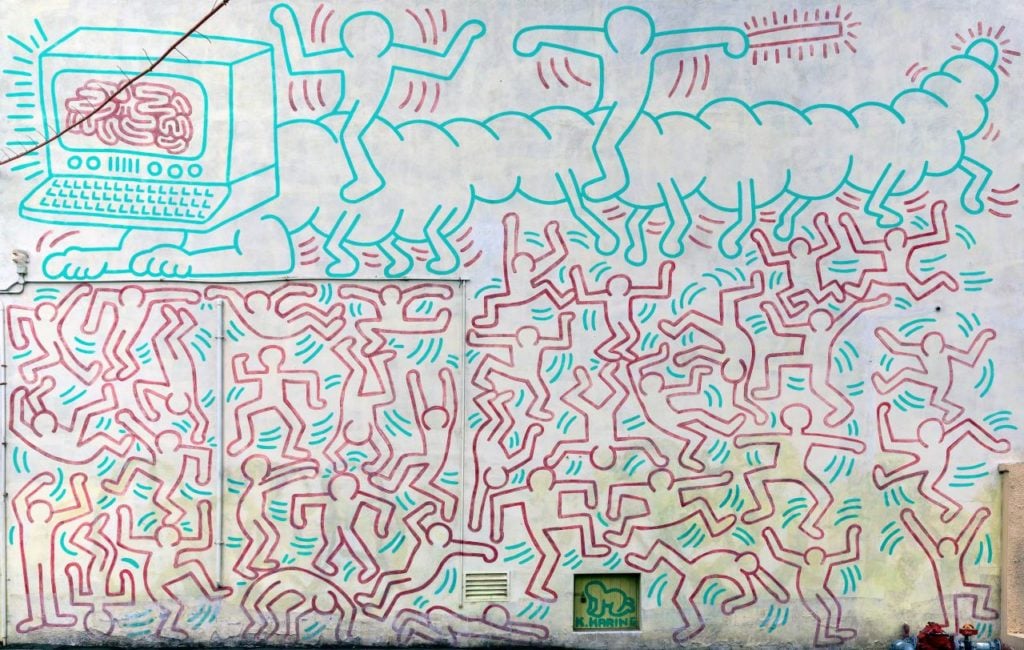
Keith Haring’s Melbourne mural was painted in 1984 on a visit to the city. Courtesy of the National Victoria Gallery.
The coffee shop-lined hipster-haven of Melbourne also happens to be one of the premier street art destinations in the world—so much so that it’s hard to pinpoint a single district to focus on. Insiders say to head to Central Business District and work your way through Federation Square, with the nearby streets of Flinders Lane with Flinders Street. Cobblestoned Hosier Lane is another locale at the heart of the city’s scene, where you can dazzle over the layered collages of murals on every surface.
As for landmarks, the Wellington Street high-rise mural by Adnate is among the most iconic. Other local tags to look out for include those by artists Rone, Dvate, Mayo, Ling, Phibs, Makatron, Ghostpatrol, Heesco, AWOL crew, SDM crew, SmugOne, and Herakut. For those interested in the history of street art, the can’t-miss work is a mural by Keith Haring, who made it during a visit to Australia in 1984. The work was lovingly restored in 2013 and is one of the best-preserved murals by the artist in existence.
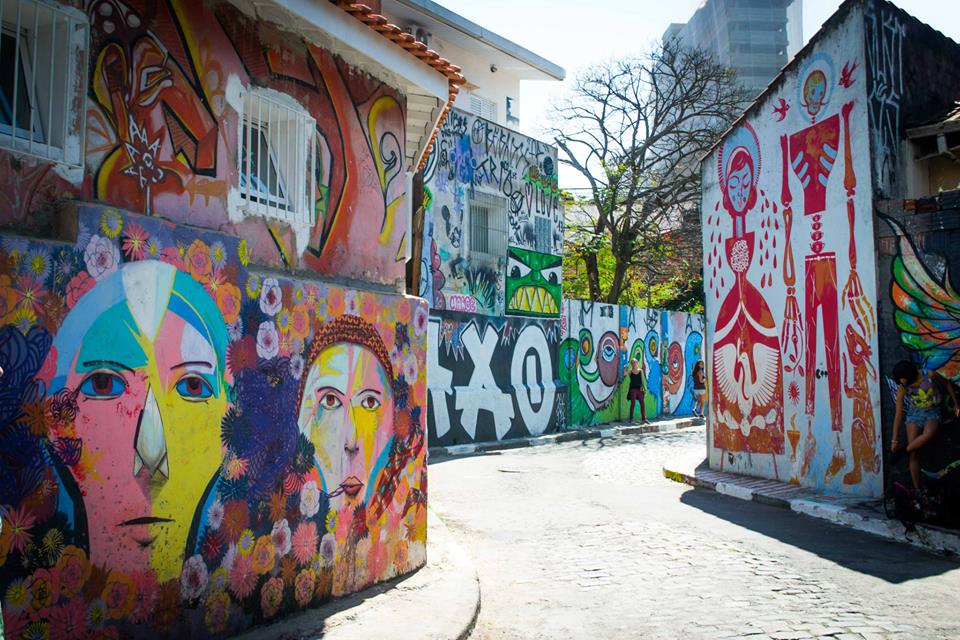
São Paulo’s “Beco de Batman” is a winding corridor of street-art surprises. Courtesy of Flickr.
The Brazilian government legalized street art in 2009, and in the decade-plus since, numerous artists have claimed the urban fabric as spaces for their visions. Rio de Janeiro and São Paulo have battled it out for the title of best street art city, with each producing world-famous street artists. But for enthusiasts looking to find a consolidated mecca of street art, São Paulo’s Beco de Batman (aka Batman alley) can’t be missed.
The open-air gallery curls through a winding alley and is bursting with a continuous stream of colorful creations. Other worthwhile neighborhoods for exploring include Cambuci and the trendy Vila Madalena. Keep a lookout for works by city-natives Os Gêmeos (twins Gustavo and Otavio Pandolfo) along with works by other lauded Brazilian street artists including Kobra, Nina, Vitche, and Nunca.
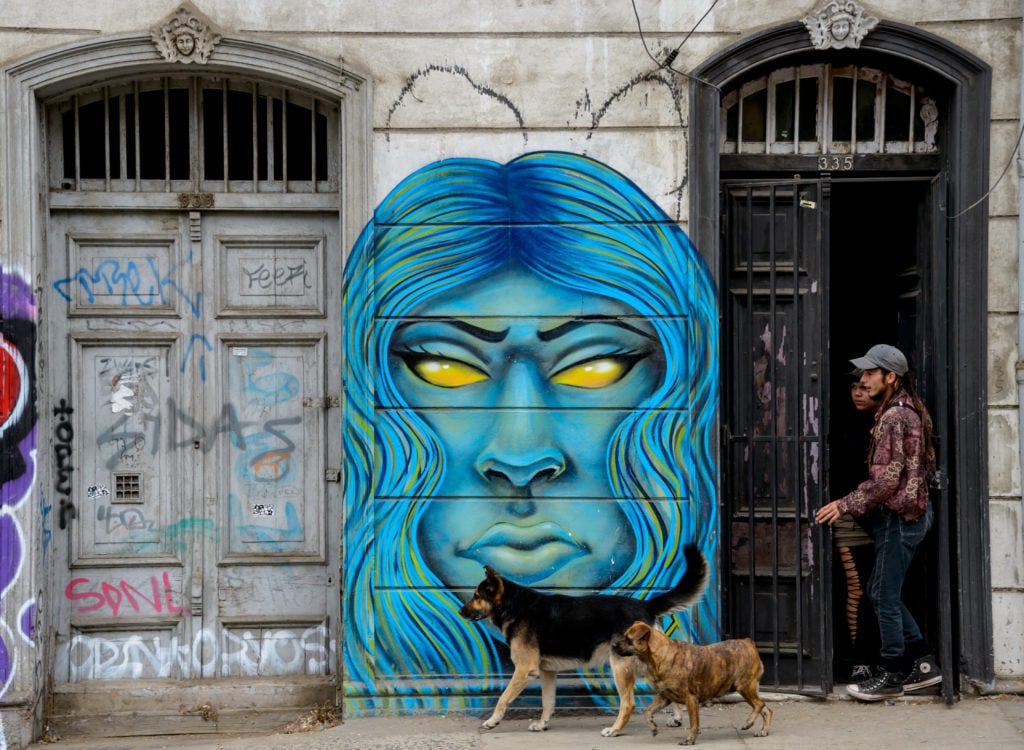
Street art adorns all corners of Valparaiso. Courtesy of Getty Images. Photo by Martin Bernetti.
The city of Valparaíso, or “Valpo”, as its nicknamed, was once a famous stopping port for European ships en route to the West Coast of the United States; during the second half of the 19th century, the hilly city experienced a surge of wealth and earned the nickname “Little San Francisco.” But with the opening of the Panama Canal in 1914, the once rich city fell into economic despair.
It was during the Pinochet dictatorship in the 1970s that street art emerged as a form of protest and resistance. After the regime fell, street art was legalized in Valparaíso and is often financially supported by the local government. Though murals are popular throughout the city, the neighborhoods of Cerro Alegre and Cerro Concepción are particularly rich in offerings. Look out of works by the local artists Cuellimangui, Inti, and graffiti duo Un Kolor Distinto, composed of Sammy Espinoza and Cynthia Aguilera.
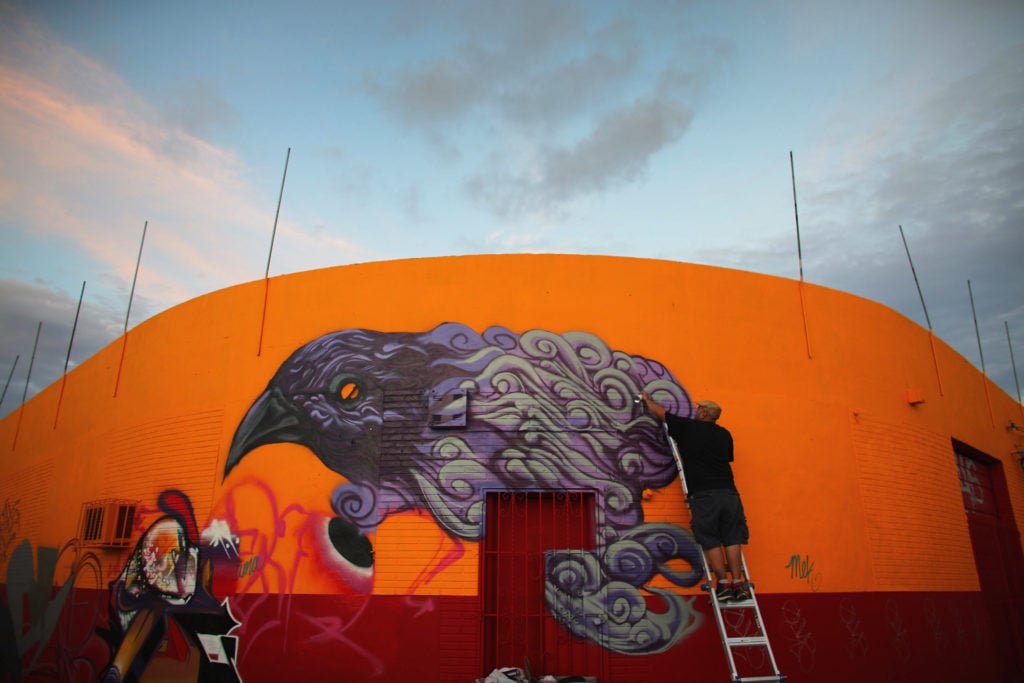
The artist known as Czrprz paints a raven on the wall of a building in Wynwood (2012). Courtesy of Getty Images. Photo by Joe Raedle.
This hip enclave pops with Miami-appropriate colorful murals and finds its street-art center at a park known as the Wynwood Walls. For the past decade, an international set of artists have been invited to paint the area’s once abandoned warehouses.
The project, kicked off by area landlord Tony Goldman in 2009, began when he first invited 12 artists, including Futura 2000, Kenny Scharf, and Swoon, to create a series of murals. The area also has a certain claim-to-fame as having the densest cluster of street art murals in the United States.

Ángel Aragonés’ Trampantojo–Reloj de sol de la Casa de la Vela was has been in Lavapiés since 1985 and is an operational sun dial.
Madrid’s humming center of multiculturalism, Lavapies, is the Spanish capital’s vibrant street art center. The Esta Es Una Plaza garden is a great jumping-off point for street art explorers, and there you will find emerging Spanish artists alongside more well-known names.
The Madrid Street Art Project is behind a lot of the area’s colorful transformation thanks to their “Muros” (“Walls”) project, which brings together artists to fill the area’s numerous, rather dreary, cement walls. Be sure to look for painter Ángel Aragonés’s Trampantojo–Reloj de sol de la Casa de la Vela, a trompe l’oeil sundial painted by the artist in 1984. And close-lookers should keep their eyes peeled for works by the Spanish street artist Jonipunto, whose works are purposefully diminutive in scale and meant to be discovered like hidden treasures.
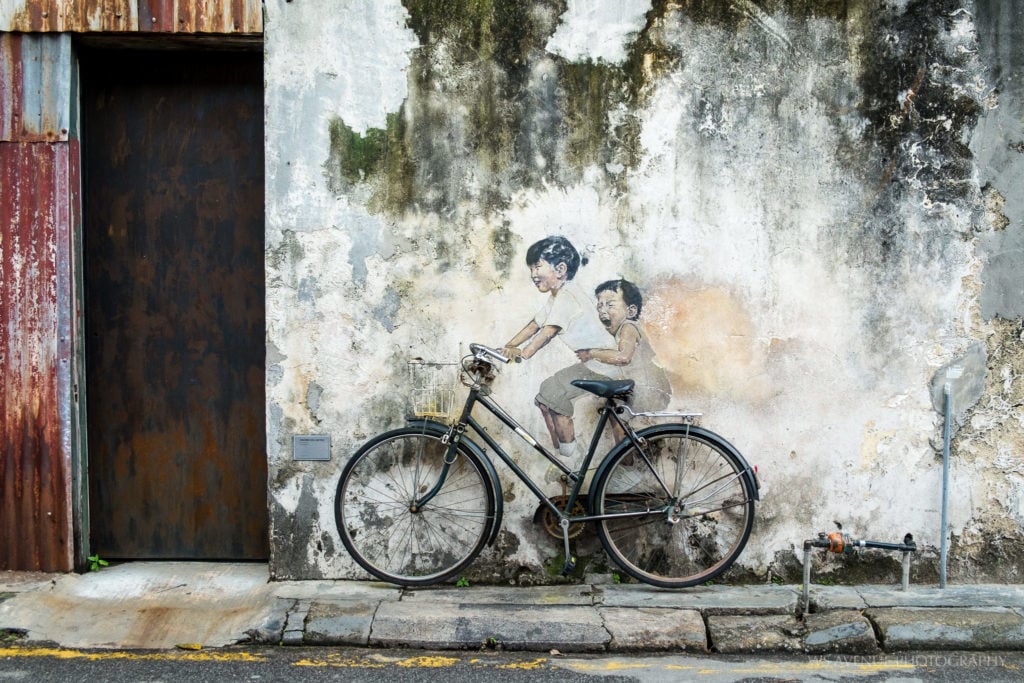
Ernest Zacharevic’s Children on a Bicycle is now one of George Town’s more popular selfie destinations.
Street art is typically thought of as an unsanctioned act of creative rebellion, but in this city, the street art scene was fostered by a top-down bid for urban renewal. In 2008, George Town was named a UNESCO world heritage site, and to honor the occasion, the city commissioned local artists Baba Chuah, Julian “Lefty” Kam, Reggie Lee, and Tang Mun Kian to create dozens of street art sculptures to reflect the daily lives of the people of Penang.
Perhaps the defining innovator of the city’s street art scene is the Lithuanian artist Ernest Zacharevic, who first came to the city in 2011 and began to transform the city’s walls with life-like tableaux murals. His Kids On A Bicycle is far-and-way the most well-known mural in the city, and remains a popular tourist destination. For the cat lovers out there, Zacharevic also created a mural project titled 101 Lost Kittens to highlight the issue of strays in the city, resulting in many hidden images of cats around the city.

Le M.U.R. has featured over 300 artist creations since it was founded. This one is by the artist KASHINK appeared in 2016.
These three neighborhoods are out of the typical Paris tourist routes—but for street art lovers, they are certainly worth an afternoon of exploration of their narrow, winding streets.
The Parc de Belleville has works by street artists such as Seth, Kenor, and El Pez adorning its walls and pillars. The area is most famed, however for Le M.U.R., an organization that oversees a wall in the Oberkampf neighborhood as a canvas for an ever-changing list of international artists. Typically, new murals are completely redone every two weeks, with painting taking place in the daytime for those who want to see the process in action.

Street art by artists Gauche and Praxis in the Bushwick. Courtesy of Getty Images.
New York City is the birthplace of street art, and is still arguably the best place to see it in the world. During the 1970s and ’80s, the Bronx and Manhattan were the movement’s epicenters, but over the past 30 years, the largely industrial neighborhood of Bushwick in Brooklyn has been transformed into the most famous street art locale in the United States.
During the late 1990s and early 2000s, artists were attracted to the area’s inexpensive rents and large spaces—and their creative inspirations soon sprawled outdoors and onto urban walls. Behind much of the neighborhood’s rotating murals is the Bushwick Collective, a nonprofit street art organization that brings artists from around the world to paint murals at designated locations.
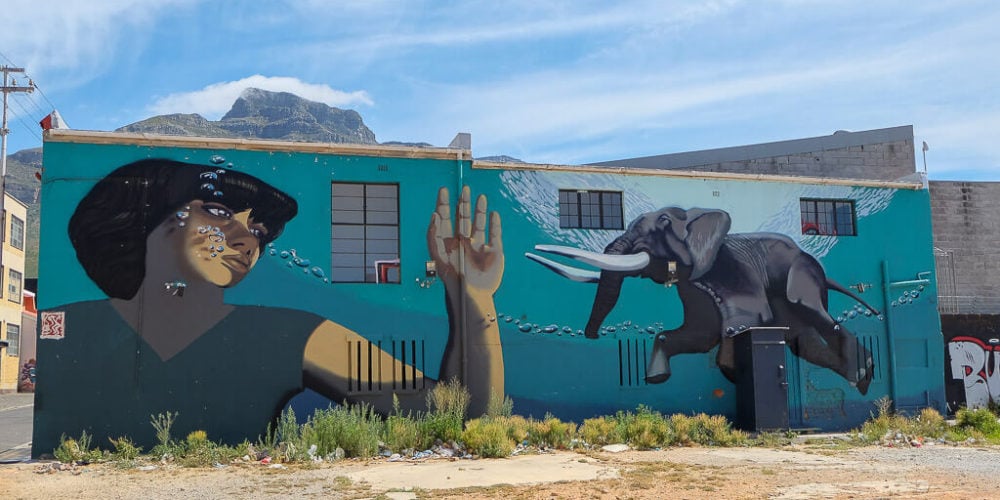
Woodstock, Cape Town.
In South Africa, street art has had a contentious history, and during the Apartheid, it was punished severely. Over the past decades, however, both Cape Town and Johannesburg have emerged as playfully competitive street art hubs, though some would argue that Cape Town artists ignited the Joburg scene. But for enthusiasts looking for an immersive experience, there’s no beating the bohemian Cape Town neighborhood of Woodstock, which is often described as an open-air gallery for the sheer number of works that can be seen along with the nearby enclave Observatory, nicknamed “Obs.”
There, visitors should be sure to look out for the tags of South African native Nardstar, who is considered one of the leading women street artists in the world. District Six—the formerly close-knit community that was destroyed by Apartheid-era forced removals—is another area worth visiting. Its walls are now covered in mural documenting the country’s political history and the fight for justice and equality.